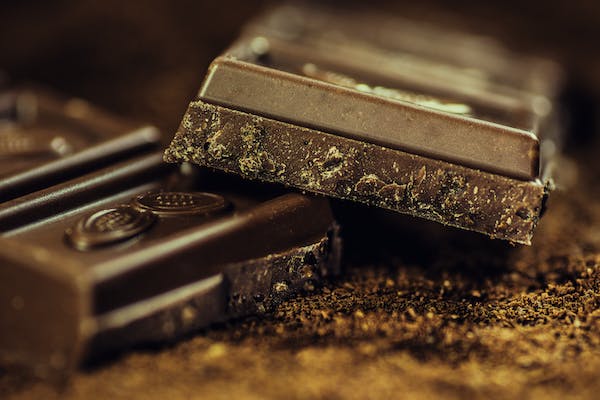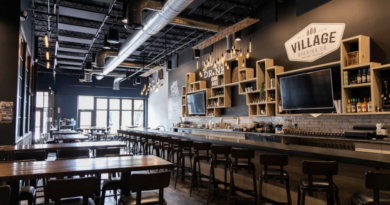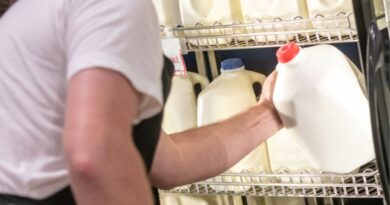Where Was the First Solid Chocolate Bar Made?
You may have seen the first solid chocolate bar on the Amazon quizzes, but did you know where it was originally made? This article will tell you the history of the chocolate bar and its origins. If you love chocolate, this article is a must read! If you have any questions, feel free to contact me directly or leave a comment below. I would be more than happy to help you out!
What Is a Chocolate Bar?
Table of Contents
Chocolate bars are portable pieces of heaven. Chocolate was first discovered by Hernando Cortez, a Spanish conquistador. He brought chocolate to Spain, where it became a favorite of the royal family. Today, chocolate bars are more popular than ever. They are the world’s most popular sweet.
The ingredients inside a solid chocolate bar vary, but typically include cocoa solids, cocoa butter, sugar, and milk. Some also contain flavorings and emulsifiers. Alternatively, some solid chocolate bars contain milk fat, which is a softer fat than cocoa butter. Other bars use sugar alcohols or other ingredients to enhance the flavor.
The data collected from the internet revealed a wide variety of information about solid chocolate bars. Some bars contain at least 36 percent cocoa, but they may be as low as 1.9 percent. Some bars even make claims regarding their environmental impact.
Facts about Chocolate Bars
A chocolate bar is a confection with chocolate and other ingredients. These bars may have layering’s or mixtures. There are also flat bars, also known as tablets. Chocolate bars are popular throughout the world. In addition, they make great gifts and can make a perfect addition to any party or special occasion.
Cocoa, sugar and milk are the main ingredients in chocolate bars. They may be dark, milk, or white. Occasionally, bars contain emulsifiers or flavorings. Some bars contain air bubbles or are aerated. The process of making chocolate bars used to be largely manual, but some manufacturers use modern processes. The hand-made method is still a good way to ensure that the bar is of high quality.
One of the most famous chocolate bars was invented by Andrew Kanavos. He originally wanted to name the bar “Andy’s Candy,” but changed it because men were not comfortable giving candy with another man’s name. It’s also worth noting that the oldest chocolate bar in the world is a hundred years old, and it was even taken on Captain Robert Scott’s first Antarctic expedition.
Where First Solid Chocolate Bar Made Amazon Quiz?
The first solid chocolate bar was created in England in 1847. It was produced by JS Fry & Sons and was the first bar to be mass produced. Later, in 1875, Henri Nestle from Switzerland invented the milk chocolate bar. Then, Thornton Limited began to produce chocolate bars and in 1890, Hershey’s created the world’s largest chocolate nut bar.
A recent Amazon quiz asks the question, “Where was the first solid chocolate bar made?”. If you can answer correctly, you could win a prize of Rs. 1, 00,000*. If you’re an Amazon fan, you can enter the quiz and win great prizes, including the Amazon August Carnival Edition!
You can also take the Where Was the First Solid Chocolate Bar Made Amazon quiz to see how much you know about chocolate. The answers to this quiz will surprise you. You’ll be glad you took the time to play. The quiz features 4 options and a bonus question about the origin of chocolate.
What is the origin of Chocolate?
Solid chocolate is derived from the cacao tree, which grows in Central and South America. Cacao beans are harvested from the pods of cacao trees, and they are roasted and ground to make chocolate. It is not known when cacao first came on the scene, but it was probably around 1900 BC in ancient Mesoamerica. The Mayans used the beans in religious rituals and believed chocolate had mystical properties. They even reserved it for the elite in their society.
When Europeans landed in the Americas, they sampled the native foods, including cacao. Spanish explorer Hernando Cortes, mistakenly thought he was a reincarnated deity, described cacao as “bitter water meant for pigs.” This was a mistake, but cacao soon became popular in Spain when it was mixed with cane sugar or honey.
In the seventeenth century, cacao became fashionable as a drink. Many believed the rich, flavorful chocolate had medicinal, nutritional, and aphrodisiac properties. By the late 1700s, mass production of chocolate became possible. In 1828, a Dutch chemist named Conrad Van Hutten invented a cocoa press. This improved consistency and reduced costs.
What is the plant from which we get Chocolate?
Chocolate is made from the seeds of the cacao plant, which comes from the tropical rainforests of Central and South America. It is a very ancient crop that has been harvested for thousands of years by the indigenous people of those regions. It was first introduced to Europe in the 16th century. It wasn’t until the 1825-1828 that technology was developed for the extraction of cocoa butter from the beans, leading to the production of solid chocolate. It was the Swiss who developed the process of making milk-chocolate in 1876, which ushered in the multi-billion dollar chocolate processing industry.
The cocoa plant grows in humid tropical regions and grows up to 40 feet tall. Each cacao tree bears 60-70 elongated pods with 20-40 white seeds. These seeds are fermented for several days to develop their chocolate flavor. They are then dried and shipped to a processing plant where they are ground into a dark paste that is used to make chocolate.
The changes chocolate undergoes
Chocolate can undergo a wide range of changes as it is roasted. In particular, the process can produce undesired changes in structure. Chocolate containing dominant form V cocoa butter crystals will gradually change into larger form VI crystals, which diffuse light and give the chocolate a grayish appearance and lack of gloss. This process is known as “fat bloom”, and can be prevented by proper tempering.
The first stage of chocolate processing involves mixing the ingredients together in the correct formulation. The next step is to refine the chocolate. This involves reducing the particle size. The particle size of chocolate should be between 20 and 25 mm. Another stage is called cinching, which involves stirring at a controlled temperature to remove unwanted volatiles. Once this is done, the chocolate is ready for molding. Finally, it is ready to be packaged.
Chocolate is subject to a series of changes in order to produce a smooth finish. Some of these changes may be subtle, and they depend on the chocolate’s composition, ingredients, methods, and temperature.
CHOCOLATE AS WE KNOW IT
Chocolate as we know it has a fascinating history. In its early days, it was grown in Mesoamerica, and was used in a wide variety of drinks. It spread to Europe after English pirates discovered it. Chocolate houses soon became a popular meeting place for the wealthy.
As the 1800’s approached, the rise of chocolate was fueled by technological advancements. These innovations brought the price of chocolate down and turned it into a food product. However, chocolate would have had to compete with other foods, such as coffee and tea. Without these innovations, the price of chocolate might not have been as high as it is today.
In ancient Mesoamerica, the Aztecs grew cacao trees and used the seeds to make bitter drink. This is where the word “chocolate” comes from, meaning “bitter drink.” Europeans also continued to use cacao beans for beverages. The Dutch, however, started experimenting with a solid form of chocolate.
EARLY HISTORY OF CHOCOLATE
The earliest chocolate bars date back to pre-Columbian cultures in Mesoamerica. In the pre-Columbian period, cacao beans were used as currency. They were traded for goods such as tamales and good turkey hens. However, little evidence remains from these early cacao harvests. Today, we enjoy chocolate bars in all shapes and sizes. While it is hard to pinpoint the exact date of their creation, it is believed that chocolate dates back thousands of years.
Chocolate was first used by the Oleic civilizations in Mexico, where it was valued at nearly 1 Spanish real (about four cents). It was not until the 17th century that Europeans began to use chocolate for medicinal purposes. It was often prescribed to treat stomach upsets and help women conceive. Later, it became popular as a dessert and drink. In 1847, Joseph Fry invented the first chocolate candy bar.
The use of chocolate spread to Europe, and it was soon popular. People praised the chocolate beans for its caffeine-boosting properties and as an aphrodisiac. It was not long before chocolate production began to speed up. Chocolate became widely consumed and was even consumed as a source of energy by people from all walks of life. After a breakthrough in the process of chocolate manufacturing, an Englishman named Joseph Fry founded a company called J.S. Fry and Sons and began producing chocolate bars. He subsequently discovered that cocoa butter solidified when heated to a certain temperature.
Nestlé’s milk chocolate bar
The first solid chocolate bar was produced in 1847 by Joseph Fry. He mixed chocolate liquor with powdered milk to create a smoother texture and a creamier taste. This method eventually led to the development of milk chocolate by Daniel Peter and Henry Nestle. It wasn’t until 1879 that Rudolph Lint added cocoa butter to improve the bar’s texture.
In 1887, Swiss confectioner Daniel Peter invented a new type of chocolate. He called it Gala, which means “from the milk.” This bar required a complex process of chemistry and mathematics to create. It quickly gained popularity in Europe. In 1904, the Nestle Corporation purchased the rights to export this chocolate bar. From there, the company’s history as a chocolate manufacturer began.
The first solid chocolate bar was created in England in 1847. JS Fry & Sons began mass-producing the confections in 1847. However, Henri Nestle of Switzerland patented the milk chocolate bar 25 years later. This bar is the company’s signature product and still is made today, using the milk from local Pennsylvania farmers.
Nestlé’s milk chocolate bar was the world’s first solid chocolate bar. Nestlé’s milk chocolate bar was the most popular bar sold at the time. Its success led to the development of several other chocolate products. While it has been difficult to find out exactly when Nestlé’s milk chocolate bar was invented, it is possible to pinpoint its birth date by comparing it to the year the first chocolate bar was created.
Daniel Peter refined the process for making milk chocolate in 1857 and teamed up with Henri Nestle. Together, they spent seven years perfecting the process. In 1879, the two men founded the Nestle Company. In 1919, Nestlé’s milk chocolate bar was released in the U.S.
Nestlé’s milk chocolate bar is the first solid chocolate bar made in the United States. This innovation led to the $22 billion chocolate industry. Today, chocolate is sold worldwide, and many US consumers are in debt to these pioneers.
Cadbury’s
Originally, Cadbury’s solid chocolate bar was made of dark chocolate. This bar was designed as a luxury for the rich and was created from a blend of cocoa beans from Venezuela and the Dominican Republic. It quickly became the most popular snack in Britain. Today, Cadbury produces many different types of chocolate bars. Some of these bars contain milk chocolate, while others feature honeycomb.
John Cadbury began selling cocoa and drinking chocolate in 1842 and by 1854 had produced 16 different varieties of chocolate. He later teamed up with his brother Benjamin to form the Cadbury Brothers of Birmingham company. In 1854, the company opened an office in London, and the company received a Royal Warrant from Queen Victoria. However, the partnership fell apart due to John’s poor health and early death. After he retired in 1861, his brothers Benjamin and George continued the company. The company became famous in 1897, when Cadbury produced the first solid chocolate bar made with milk.
In the early 20th century, Cadbury’s was one of the Big Three British confectionery manufacturers. The Bourneville Chocolate was its biggest hit, and the company quickly merged with Fry & Sons to form the company that we know today. Today, Cadbury’s headquarters are located in the suburb of Bourneville.
The British company J. S. Fry & Sons produced the first solid chocolate bar in 1847. Founded in 1728, the company was one of the first chocolate companies in the world. According to their website, John Cadbury developed the recipe for the bar. It was originally made of sugar and cocoa butter. The bar was originally intended to be eaten as a dessert or snack.
In 1824, John Cadbury opened a shop in Birmingham. He believed that alcohol was a major cause of poverty. Other products that he sold included mustard and hops. He was very particular about the quality of his products and insisted on high standards for them. In 1857, the Bourneville factory employed over 2,000 people. In the following year, the company incorporated as a limited company.
During World War I, the Cadbury brothers’ factory in Bourneville was used to manufacture the solid choco bar. Workers were based in a series of cottages located in the area. In the 1920s, the company began mass production and set up a new factory. In addition to the Bournville factory, the company also established a factory in Claremont, Wales. This factory was the first overseas factory in the history of the company.
J. S. Fry & Sons
The first solid chocolate bar was created by JS Fry & Sons, a company based in Bristol, England, in 1847. The company produced a number of different varieties, including Fry’s Chocolate Cream, which was the first mass-produced bar. The company also produced the first chocolate Easter eggs in the UK and the first Turkish delight in 1914.
After Anna Fry’s death, Joseph Storrs Fry continued the family business. He also produced chocolate tablets for hot beverages. In the year 1799, the company took on two sons. The business grew to become one of the largest confectioneries in the UK.
The company also produced Mallow Cups and Clark Bars. The Clark Bar was first sold in Pennsylvania and later was sold throughout the United States. At the time, the process of making a Clark Bar took 90 minutes. In 1914, J. S. Fry & Sons made the first solid chocolate bar. The first solid Chocó bar was made by combining two types of chocolate and a plain fondant center.
As chocolate’s popularity spread throughout the world, the J.S. Fry & Sons Company started to make solid chocolate bars, which became a staple of the British diet. In 1848, another company, John Cadbury, began making their own chocolate bars and marketed them under the name Cadbury. Eventually, these two companies would become two of the most important chocolates in history.
The company continued to produce solid chocolate bars until the 1970s. After the First World War, the company merged with Cadbury to form the British Cocoa and Chocolate Company. In 1919, the company moved to Somerdale, outside of Bristol. Although the Fry name was no longer used, the company continued to produce Cadbury’s products.
While chocolate was first consumed as a beverage, it was also used medicinally. Chocolate was used as a remedy for upset stomachs and even during pregnancy. In the 1870s, its popularity began to grow as a dessert and a drink. In 1847, J. S. Fry & Son’s company introduced the first solid Chocó bar, a type of crème bar.




